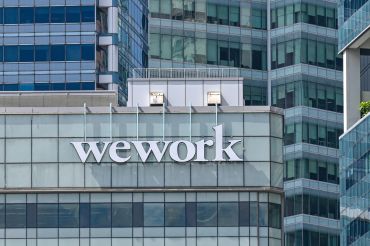
Mezzanine lending offers lots of opportunities for nonrecourse carveout guarantors to get into trouble. This month’s column tells the story of how one of those opportunities played out, in a litigation where I acted as an expert witness called by the guarantor.
The story began when a lender closed a nonrecourse mezzanine loan using a set of “boilerplate” documents. After the loan defaulted, an investor bought it; the investor connected a complex series of dots in a creative way that no one ever intended or imagined, and—bingo—the investor claimed the guarantor had become personally liable for the entire loan.
This particular mezzanine loan was created when the original mortgage lender, after the original closing, exercised its right to convert part of a nonrecourse mortgage loan into a nonrecourse mezzanine loan. The security for that mezzanine loan consisted of a pledge of all direct or indirect ownership interests in the mortgage borrower. So the mezzanine loan was structurally subordinate to the mortgage loan. The mezzanine lender would recover nothing if the value of the underlying real property dropped below the principal amount of the mortgage loan. Or that was the thinking, at least.
The mezzanine loan documents said the guarantor would become personally obligated for the entire mezzanine loan if any transfer occurred except a permitted transfer. The definition of permitted transfer included any lien that secured the existing mortgage loan documents. But that definition didn’t include a foreclosure under the mortgage loan.
Any student of recent commercial-real-estate history can predict what happened next. The mortgage loan went into default in the financial crisis. The mortgage lender foreclosed. The collateral for the mezzanine loan became worthless. The investor that held the mezzanine loan then claimed the mortgage foreclosure constituted a prohibited transfer under the mezzanine loan, making the guarantor personally liable for the entire mezzanine loan. The holder of the mezzanine loan said it was just enforcing a full guaranty that had been activated by its own terms.
At the guarantor’s request, I expressed to the court my view that the parties who originated the mezzanine loan could not possibly have intended this bizarre result. The original mezzanine loan was structured and documented as an ordinary nonrecourse loan to a single-purpose entity. It did not rely on anyone’s credit. And the originator obtained a nonconsolidation opinion for extra comfort about the separateness of the mezzanine borrower from anyone else.
If the mezzanine loan were in fact personally guarantied at the single moment that mattered most—when the mortgage loan went into default—then the mezzanine loan would have violated the most fundamental principle of nonrecourse financing to single-purpose entities: the idea that the loan does not depend on the principal’s credit but only (absent special circumstances) on the strength of the real estate. Moreover, when the mezzanine loan originator contributed the mezzanine loan to a CDO transaction, all the disclosure documents described it as a nonrecourse loan. That description, of course, would have matched industry expectations while also entirely undercutting the creative claims of the mezzanine loan holder.
The court ultimately ruled for the guarantor, stating that the possibility of a mortgage foreclosure was an integrated part of the mezzanine lending transaction. When the mezzanine lender made a nonrecourse loan backed by equity interests in the mortgage borrower, the mezzanine lender owned the risk and the possibility that the mortgage might go into default and the mortgage lender might foreclose. Once the mezzanine loan documents treated the mortgage loan itself as a permitted transfer, a mortgage foreclosure automatically became a permitted transfer.
If anyone had looked at the mortgage, it would have been obvious that a foreclosure might occur, as that contingency was one outcome the document expressly addressed. So, by accepting mezzanine loan collateral that was structurally subordinate to a mortgage in order to back a loan documented as nonrecourse, the mezzanine lender lost the ability to claim surprise or outrage at the possibility of a mortgage foreclosure or to claim that it triggered personal liability.
This case was one of relatively few in which a guarantor successfully defended against left-field claims of full recourse liability. In most cases, the courts have connected the dots much as the loan purchaser proposed here. Guarantors have faced some unpleasant surprises as a result.
Today, borrowers and their guarantors presumably know better—and know how to dodge this bullet. One just needs to play out all the possible outcomes of each loan, making sure the guarantor never faces liability for actions that are either (a) not “wrongful” or (b) beyond its control.
Intricate structures of numerous, interacting defined terms should raise special concern for any possible carveout guarantor, particularly if some of those terms capture a wide range of possible future events, such as transfers.
The carveout guaranty remains a very dangerous tool—essential to modern deal structures but something to be handled with great care.



